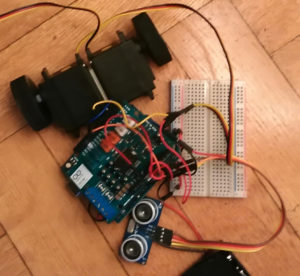Frank Jackson’s famous thought experiment about qualia asks whether there are subjective facts about the colour red that are distinct from the physical facts produced through scientific inquiry (Jackson 291). The story involves an individual named Mary who grew up in a black-and-white room and has never seen any colours, but has studied everything there is to know about “redness” and how the brain processes light. As a neuroscientist, her studies have provided her with a robust theoretical understanding of colour perception without ever having experienced colour herself, leading us to wonder whether she learns anything new about the colour red after she sees red for the first time. The claim Jackson is interested in making is that there is no information about the experiences of others that Mary had not learned about while in her room. If Mary were to be released only to “realize how impoverished her conception of the mental life of others has been all along” Jackson suggests this generates a problem for physicalism (292).
William Lycan believes Mary would learn something new upon leaving the room because she is now presented with a new form of representation, namely, one produced by the act of introspection (Lycan 389). Building on Nagel’s ideas about what-it-is-like to experience things from a certain perspective, Lycan suggests the mind presents objects or features of the environment in a “special, uniquely internal point of view” (Lycan 390). More interestingly, Lycan goes on to suggest that the contents of these introspective representations are “non-physical pieces of information” (Lycan 391). This is because these internal representations are not synonymous with English words, or any other natural language words, because the internal monitors present within our bodies do not rely on linguistics. What I am assuming he means by this is that although we may use language for inner speech or verbalized thought, representations for qualia or phenomenal experiences such as redness or pain do not use language, but are intrinsic to the body and are relatively ineffable (Dennett 385). Lycan also suggests that these representations are non-physical because neuroscience is unable to provide information on introspective content, and as such, Mary could only represent other people’s experiences of red from a public, neuroscientific perspective (Lycan 393).
While this thought-experiment might pose problems for certain physicalist views, our general understanding of the world at this point in time can start to account for why Mary learns something new upon leaving the room. As she learns about how her own body generates experiences of red from a first-person perspective, she is now able to understand how others must use these internal representations as well. Since neuroscience is only interested in the functional organization of the brain and nervous system, Mary does not know how red appears to subjects engaging with particular wavelengths of light. Prior to her release, Mary could theoretically understand how individuals shop for tomatoes, but without the ability to see red, how this selection process is experienced from an individual’s perspective is still a mystery to her. The inner, subjective details of how people generally go about searching for the ideal tomato were previously off-limits, as her abilities to discriminate colours had yet to be developed. As such, Mary’s understanding of what redness means, especially when fruit shopping, would have been incomplete. Her own, internalized associative network of red objects and their commonalities would be absent or piecemeal, therefore limiting her understanding of how we collectively think about and interact with redness or red objects.

Works Cited
Dennett, Daniel C. ‘Quining Qualia’. Consciousness in Modern Science, Oxford University Press, 1988, pp. 381–414.
Jackson, Frank. ‘What Mary Didn’t Know’. The Journal of Philosophy, vol. 83, no. 5, JSTOR, 1986, pp. 291–95.
Lycan, William G. ‘Perspectival Representation and the Knowledge Argument’. Consciousness: New Philosophical Perspectives, OUP Oxford, 2003, p. 384.




